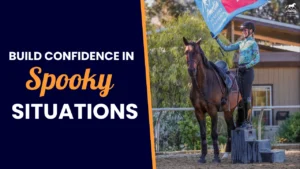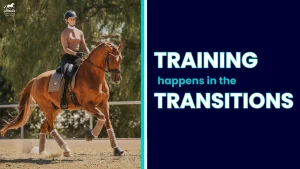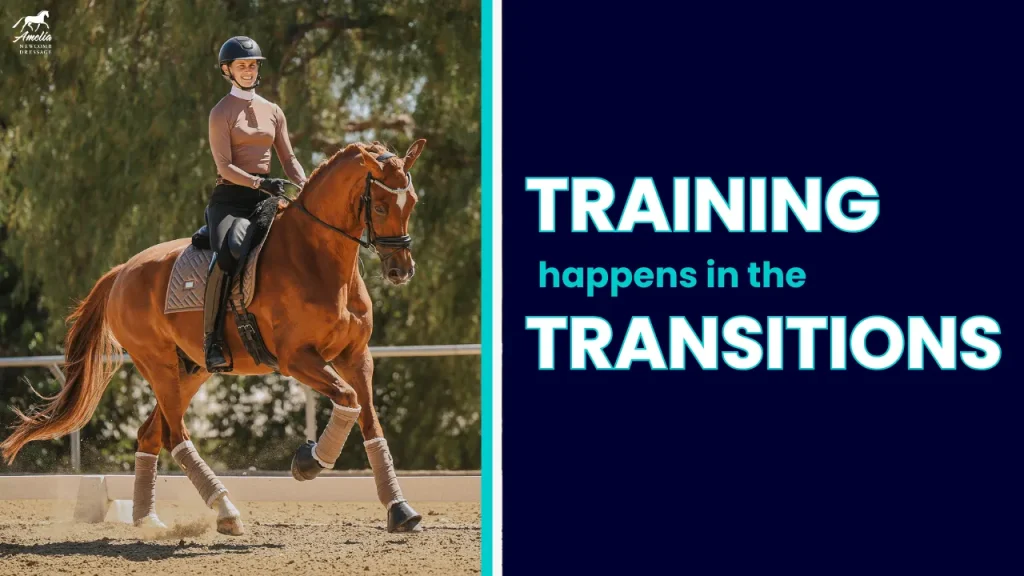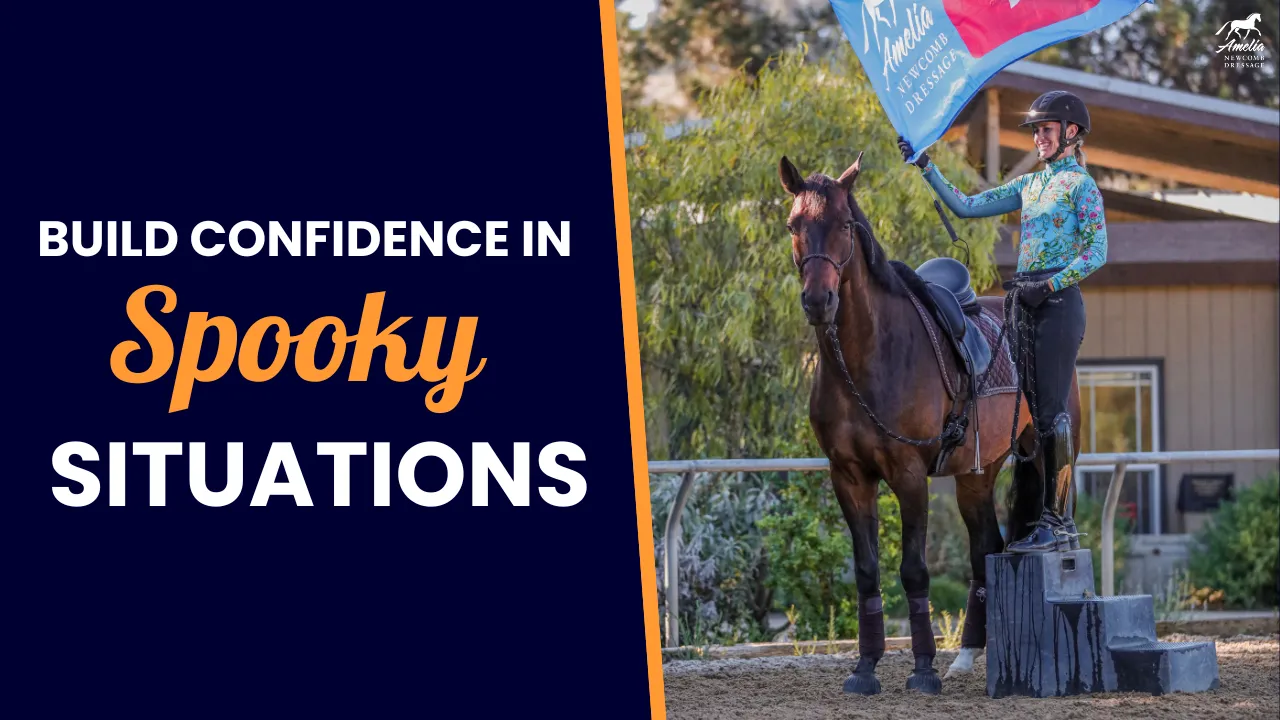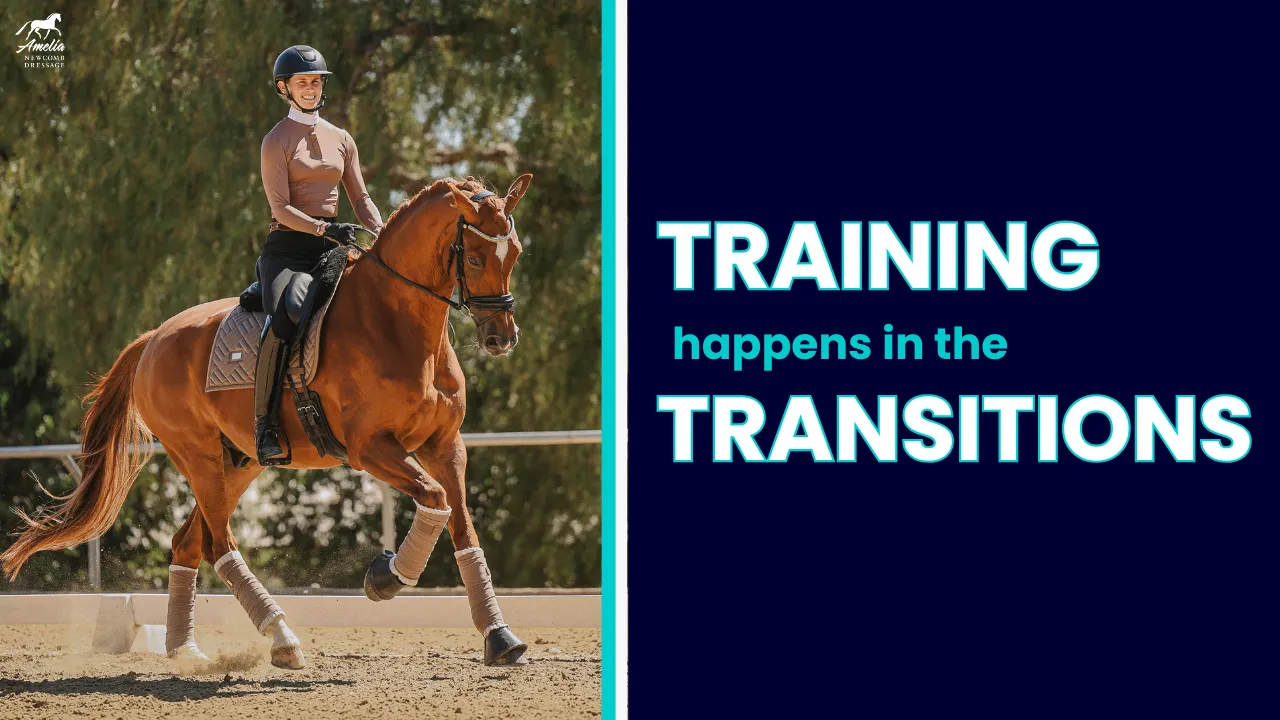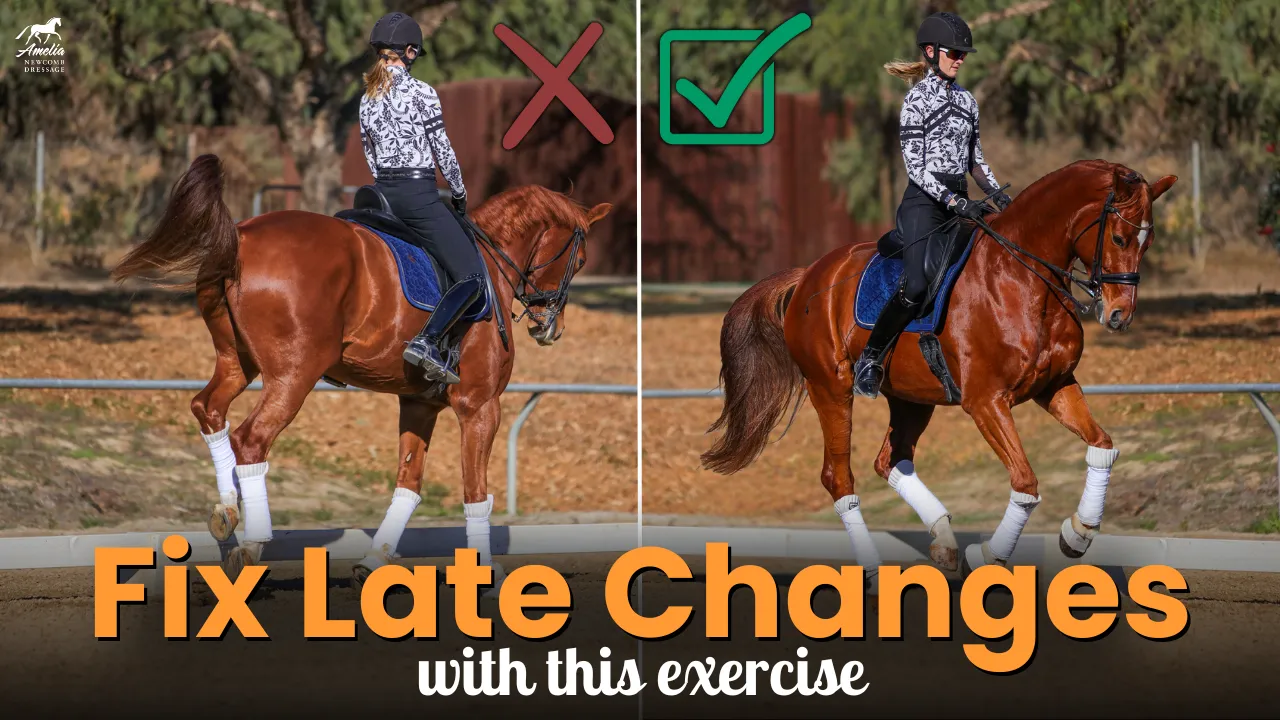Is your horse on the forehand? Behind the leg? Or not connected? Transitions are the best exercise to develop rhythm, responsiveness, and engagement in your horse. This video will walk you through one of my favorite transition exercises. Trot-walk-trot transitions are simple but powerful for improving balance and communication, especially in young or green horses.
Before we get into the video, I wanted to remind you that my Strides with Amelia program is open this week only! If you’re craving structure, support, and consistent feedback, this is your chance to join a community of riders committed to growth and progress. Click here to learn more.
Ok, now on to the video! Transitions test the quality of your connection, your horse’s balance, and their understanding of your aids. When done correctly, they build strength and engagement in the hind end, especially when you support the horse through the transition with clear aids and a balanced seat.
Here are step-by-step instructions for your walk-trot transitions:
- Establish your trot. Begin on a circle and find a steady tempo—1, 2, 1, 2—while maintaining consistent contact. Make sure your horse is rhythmical and balanced.
- Prepare for the walk. On the open side of the circle, gently yield your horse away from the inside leg to encourage bend in the body and engagement from the inside hind.
- Ask for the downward transition. Use your seat and leg to support the transition to walk, keeping the contact soft and steady.
- Move back into trot. Close your leg and ask for trot again. If your horse doesn’t respond to the calf, use a bump with your heel to get the reaction.
- Repeat both directions. Work on both reins to strengthen both hind legs and address one-sidedness. Stay consistent with your aids and ride with patience.
Common Mistakes to Avoid
If you pull on the reins in the downward transition, your horse may drop the hind end or brace. Instead, use a small leg-yield feeling to keep the inside hind stepping under.
In between your transitions, be mindful of your gait quality. A good transition starts with a good walk or trot, so make sure the rhythm and bend are there before asking.
This exercise touches the first three elements of the Training Scale: rhythm, suppleness, and connection. Always start with a consistent rhythm, add bend through the circle (suppleness), and then use transitions to develop connection.
Happy Riding!
Amelia
P.S. If you’re looking for ongoing support in your riding, check out my Strides with Amelia program. This is my monthly continuing education program, and it is designed to help riders like you make consistent progress every ride. But hurry! Enrollment is only open for a limited time! Join Strides here.

